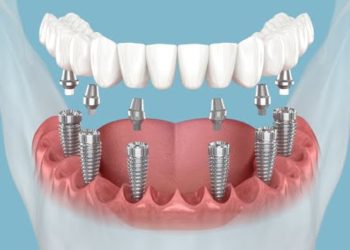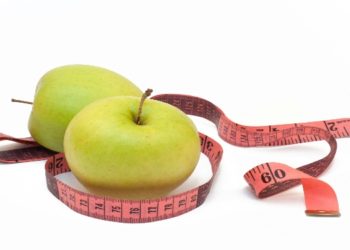Have you ever wondered why you’re sometimes unable to feel your toes? Or why do your legs tingle as if a thousand tiny needles are pricking them? These could be signs of poor blood circulation in your feet, a common issue that many of us don’t realise we’re dealing with until it starts affecting our day-to-day mobility and comfort. So, before it gets worse, it’s important to find the root causes of poor circulation and solve the problem at its core.
In this blog, we’ll dive into the causes of poor blood circulation in the feet and look at its common symptoms. We’ll discuss some common ways in which you can improve circulation, including the usage of foot massagers.
What Is Poor Circulation?
Poor circulation is essentially when your blood doesn’t flow as efficiently as it should through your body. The circulatory system is like a network of highways, delivering oxygen and nutrients to every part of your body. When there’s a jam on the way, certain areas, like your feet, might not get the blood they need. This can lead to various uncomfortable symptoms, such as cold toes, numbness and even more serious health issues if left unaddressed.
Common Causes for Poor Blood Circulation in the Feet
Let’s get to the heart of the matter – what exactly causes poor blood circulation in your feet? Several factors can contribute to this issue, and understanding them can help you take the right steps towards improving your circulation, such as using a leg and foot circulation machine.
1. High Blood Pressure
High blood pressure, or hypertension, is a major culprit behind poor circulation. When your blood pressure is consistently high, it can damage your arteries, making them less flexible and more prone to narrowing. This narrowing reduces blood flow, particularly to the extremities like your feet. Over time, this can lead to chronic circulation issues, making it harder for your body to deliver the necessary nutrients and oxygen to your lower limbs.
2. Smoking
Smoking is notorious for wreaking havoc on your health, and your circulation is no exception. The chemicals in cigarettes can damage the lining of your blood vessels, leading to a buildup of plaque that narrows the arteries. This makes it more difficult for blood to flow freely, especially to your feet. If you’re a smoker, quitting is one of the best things you can do to improve your circulation, besides using a foot massage machine.
3. Diabetes
Diabetes is another significant cause of poor circulation in the feet. High blood sugar levels can damage blood vessels and nerves, particularly in the lower extremities. This damage can lead to a condition known as peripheral neuropathy, which affects the nerves and blood flow in your feet.
4. Obesity
Carrying extra weight puts additional pressure on your circulatory system, making it harder for your body to pump blood effectively, especially to your feet. Obesity can also lead to other health conditions that contribute to poor circulation, such as high blood pressure and diabetes. Alongside using a foot massager, losing weight through a healthy diet and regular exercise can significantly enhance your circulation.
5. Varicose Veins
Varicose veins aren’t just a cosmetic concern, they’re a sign that your blood isn’t circulating properly enough. These swollen, twisted veins occur when the valves in your veins don’t function properly, causing blood to pool in your legs and feet. This pooling can lead to swelling, discomfort, and further circulation problems if not addressed.
6. Peripheral Artery Disease
Peripheral Artery Disease (PAD) is a condition where the arteries that supply blood to your limbs become narrowed or blocked due to plaque buildup. This can severely restrict blood flow to your feet, leading to pain, numbness, and other circulation-related symptoms. PAD is often linked to other cardiovascular issues, so it’s essential to manage it under the guidance of a healthcare professional.
7. Raynaud’s Disease
Raynaud’s Disease is a condition that causes the small arteries in your hands and feet to narrow, limiting blood supply to these areas. This can cause your fingers and toes to turn white or blue and feel cold and numb. Raynaud’s is often triggered by cold temperatures or stress, and while it’s not life-threatening, it can be quite uncomfortable.
What Are the Symptoms of Poor Circulation in the Feet?
Now that we’ve covered the causes, let’s talk about how poor circulation can be noticed. The symptoms can vary, but common signs include:
- Numbness: A lack of sensation in your feet is often the first sign of poor circulation.
- Muscle Cramps: Poor circulation can cause your muscles to cramp or spasm, especially after physical activity.
- Tingling Sensation: That prickly feeling can on the skin be a sign that your blood isn’t flowing properly.
- Swelling: Fluid buildup in your feet and ankles can occur when circulation is poor.
- Pale or Blue Skin Colour: This discolouration is due to a lack of oxygenated blood reaching your feet.
- Cold Fingers or Toes: If your feet are always cold, poor circulation could be to blame.
- Bulging Veins: Bulging veins, particularly varicose veins, are a sign that blood isn’t flowing as it should.
How to Improve Circulation in the Feet & Legs?
Improving circulation in your feet doesn’t have to be a chore—there are several easy and enjoyable ways to get your blood moving again.
- Use a Foot Massager: These handy devices can stimulate blood flow in your feet, helping to alleviate symptoms of poor circulation. A good foot and leg circulation machine can work wonders after a long day, giving your feet the care they need.
- Exercise Regularly: Activities like walking, swimming, or cycling can boost circulation by encouraging blood flow throughout your body.
- Stay Hydrated: Drinking plenty of water helps keep your blood flowing smoothly, reducing the risk of circulation issues.
- Wear Compression Stockings: These can help prevent blood from pooling in your legs and feet, making it easier for your circulatory system to do its job.
- Leg Elevation: Elevate your legs up with a pillow to encourage blood flow back to your heart, particularly after a long day of sitting or standing.
Conclusion
Numbness in the feet might give you temporary discomfort, but it signals a problem that may have permanent impacts if left untreated. Whether it’s due to high blood pressure, smoking, diabetes, or any of the other causes mentioned above, addressing the issue of poor circulation is crucial for maintaining overall health. By understanding the common causes and symptoms, and by taking steps to improve circulation, such as using a foot massager, staying active, and keeping hydrated, you can keep the worries and woes of poor circulation at bay. So, maintain normal circulation in the feet and put your best foot forward today and every day.










































































